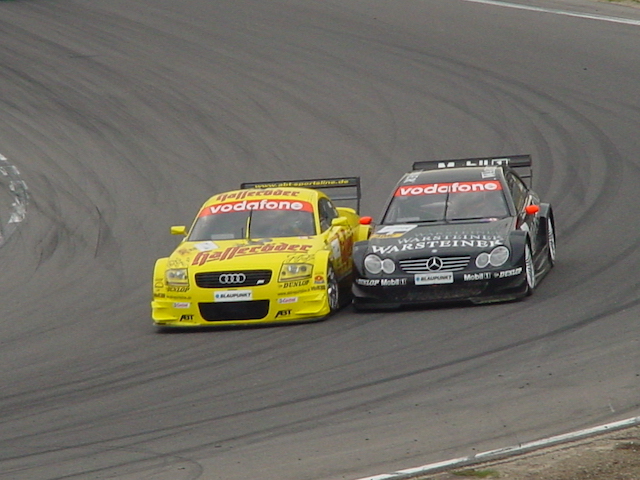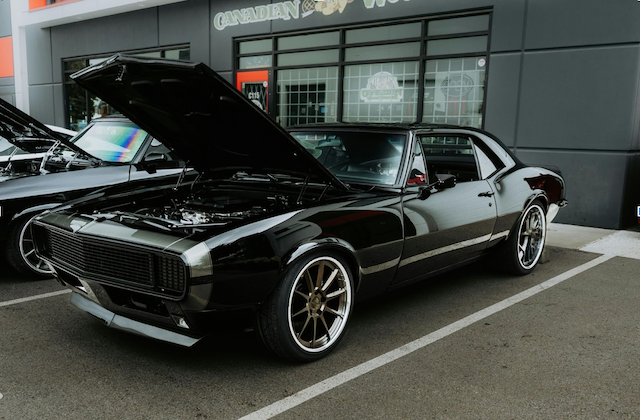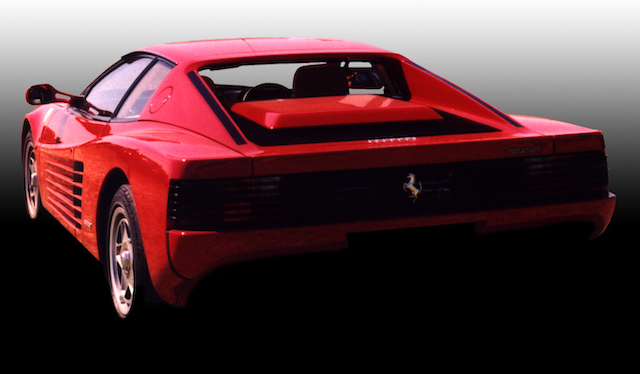Seeing Auto Racing On TV Is A Thrilling Experience
Auto racing has become a global phenomenon, attracting millions of viewers. Watching auto racing on TV offers an exciting way to enjoy the thrill of high-speed action, intense competition, and skilled drivers. The accessibility of these events through television has allowed motorsport enthusiasts to follow their favorite drivers and teams from the comfort of their homes. As television technology advances, the experience of watching auto racing has become even more immersive. From stunning HD broadcasts to real-time data overlays, modern TV broadcasts provide fans with a deeper connection to the action. The evolution of how races are presented has made auto racing on TV a captivating experience for viewers.
Popular auto racing on TV
Numerous auto racing on TV are broadcasted worldwide, attracting millions of viewers. Some of the most popular racing events on TV include Formula 1, NASCAR, MotoGP, and endurance racing. These events showcase some of the best drivers in the world, competing for victory in various formats. Formula 1 is arguably the most prestigious and globally recognized auto racing series. It features high-performance cars, cutting-edge technology, and some of the most talented drivers on the planet. Fans eagerly tune in to watch the intense rivalries, dramatic overtakes, and high-speed battles that define each race.
NASCAR, a popular racing series in the United States, also commands a massive TV audience. Known for its oval tracks and exciting finishes, NASCAR races are thrilling spectacles of speed and strategy. The sport’s unique culture and loyal fan base make it a key player in the world of auto racing on TV. MotoGP, the premier motorcycle racing series, has a massive following as well. Riders push their limits on some of the most challenging circuits, showcasing their bravery and skill. With the increasing popularity of motorcycle racing, MotoGP continues to captivate a global audience through television broadcasts.
Endurance racing, such as the 24 Hours of Le Mans, has a special place in motorsport. These races test the limits of both the cars and drivers, who must maintain peak performance for extended periods. These events, often broadcast live, allow viewers to witness a unique blend of strategy, stamina, and speed.
Why fans love auto racing on TV
The excitement of auto racing on TV lies in its unpredictability. Races can change in an instant, with positions frequently shifting as drivers push their cars to the limit. The constant action, high-speed pursuits, and tactical battles keep viewers on the edge of their seats. Another reason for the popularity of auto racing on TV is the depth of storylines. Rivalries between drivers, team dynamics, and the technical aspects of the cars create a compelling narrative throughout the season. Fans enjoy following the progress of their favorite drivers as they compete in different races and face new challenges.
In addition to the racing itself, the behind-the-scenes aspects also engage fans. Interviews with drivers, team principals, and technical staff provide insight into the strategies and decisions that shape the outcome of each race. These elements enhance the viewing experience, making fans feel more connected to the sport.
Television broadcasts and race coverage
Television broadcasts of auto racing events have evolved significantly in recent years. The production value of these broadcasts has skyrocketed, providing fans with crystal-clear visuals, enhanced graphics, and immersive audio. High-definition cameras, drone footage, and onboard cameras offer unique perspectives of the race. Real-time data overlays on TV broadcasts allow viewers to track key metrics such as lap times, tire wear, and fuel levels. These features provide fans with valuable insights into the race, adding another layer of excitement. Advanced graphics also help viewers understand the tactical decisions drivers and teams make throughout the race.
Live commentary is an integral part of auto racing broadcasts. Expert commentators provide play-by-play coverage, offering analysis of key moments and explaining the intricacies of the race. Their insights into the strategies and challenges faced by drivers help fans gain a deeper understanding of the sport.
Global reach
The global reach of auto racing on TV is one of the sport’s most appealing aspects. Events like the Monaco Grand Prix, Daytona 500, and Le Mans attract millions of viewers worldwide. TV broadcasts enable fans from different countries and continents to watch their favorite races live, regardless of their location. The international nature of auto racing also brings together diverse cultures and fan bases. Drivers from different parts of the world compete against each other, creating a sense of unity among fans. This global appeal has helped auto racing grow in popularity and attract viewers from all walks of life.
Networks and streaming platforms have capitalized on the global demand for auto racing content. Major television networks, such as ESPN, NBC, and Sky Sports, broadcast key events to millions of households. Online streaming platforms also provide fans with access to live coverage, highlights, and archived races, allowing fans to enjoy the sport on their terms.
Digital and social media
In recent years, digital and social media platforms have played a major role in auto racing. Fans use social media to engage with their favorite drivers, teams, and events. Platforms like Twitter, Instagram, and Facebook offer real-time updates, behind-the-scenes content, and fan interaction, enhancing the overall experience. Additionally, digital platforms and apps allow fans to access race broadcasts on their mobile devices. This convenience makes it easier for people to watch races from anywhere, whether at home or on the go. Many networks and teams also use social media to share exclusive content, providing fans with a deeper connection to the sport.
The influence of digital media has also helped auto racing grow its fan base, especially among younger generations. As younger viewers turn to social media and online platforms for their entertainment, the sport has adapted to meet their preferences. This shift has expanded the reach of auto racing on TV, attracting new viewers and keeping the sport relevant in today’s digital age.
Sponsorships and advertising
Sponsorships and advertising have a significant impact on auto racing broadcasts. Sponsors play a crucial role in financing teams and events, ensuring that races continue to take place. The presence of brand logos on cars, uniforms, and tracks adds to the spectacle, highlighting the commercial nature of the sport. Advertising during broadcasts also plays a key part in supporting the sport’s financial ecosystem. Commercials and branded content during race coverage generate revenue, which is reinvested into the sport. This income helps maintain the infrastructure of racing series and enables teams to continue competing at the highest level.
In addition to traditional advertisements, auto racing on TV has embraced new forms of sponsorship. Digital ads and interactive content are becoming more common, allowing sponsors to engage with fans in new and innovative ways. These advertising methods not only benefit sponsors but also enhance the viewing experience for fans.
Growing popularity of streaming services
Streaming services have revolutionized the way fans consume auto racing content. Platforms like Netflix, Hulu, and Amazon Prime Video offer documentaries, behind-the-scenes footage, and original series that provide an in-depth look into the world of motorsport. These shows give fans a closer connection to drivers, teams, and races. Live streaming of races has also become more popular, allowing fans to watch events in real time on platforms like YouTube and Twitch. These services provide an alternative to traditional cable TV, giving fans the flexibility to watch races on any device with internet access.
The rise of streaming platforms has changed the way auto racing is consumed. Viewers now have more options to follow their favorite events, watch on-demand content, and even interact with fellow fans during races. Streaming services have helped make auto racing more accessible than ever before.
Future of auto racing
The future of auto racing on TV looks bright, with technological advancements continuing to enhance the viewing experience. Virtual reality and augmented reality are expected to play a major role in how races are broadcast in the future. These technologies will allow fans to immerse themselves in the race and experience it from a driver’s perspective. As fan engagement continues to grow, TV broadcasts are likely to incorporate more interactive features. Real-time voting, live chat options, and personalized viewing experiences are expected to become commonplace in future broadcasts. These innovations will allow fans to interact with the race in new and exciting ways.
The rise of electric racing, such as Formula E, also promises to bring a new dimension to auto racing on TV. As electric vehicles become more prominent in motorsport, TV coverage will adapt to showcase these exciting new developments. The evolution of the sport and its integration with cutting-edge technology will keep fans engaged for years to come.
Thrilling world
Auto racing on TV offers a dynamic and engaging experience for motorsport fans. With its thrilling races, captivating storylines, and cutting-edge broadcast technology, watching auto racing on TV continues to excite millions of viewers worldwide. As the sport evolves and embraces new technologies, the future of racing on television promises to be even more exciting. From traditional racing series like Formula 1 to emerging sports like electric racing, the world of auto racing on TV remains an exhilarating spectacle that fans around the globe look forward to enjoying.
Expose your brand at the East African Safari Classic Rally05 – 13 December 2025
|






